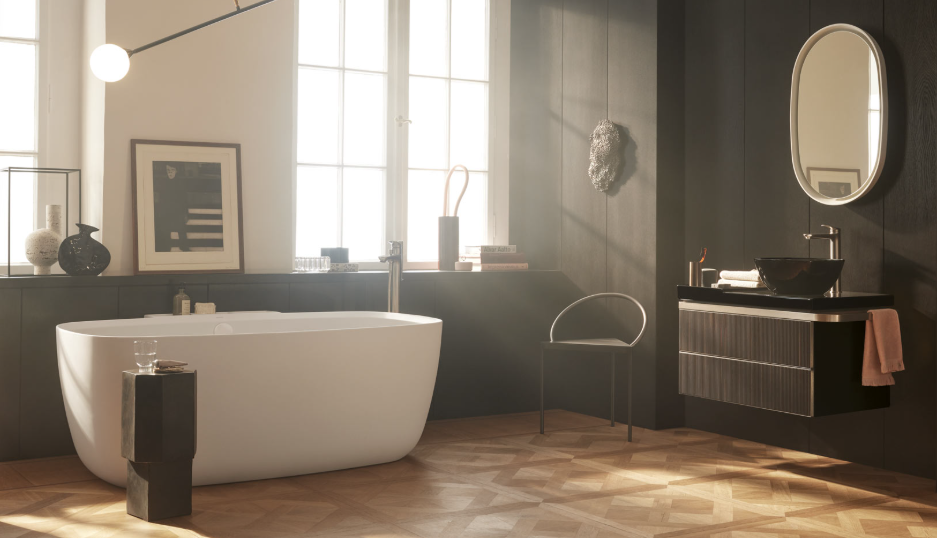Saving water in the bathroom is key to sustainable living. As one of the areas of the home that uses the most water, the bathroom offers numerous opportunities to reduce consumption while maintaining comfort and functionality. This article provides a clear, point-by-point overview of sustainable solutions for improving water efficiency in the bathroom.

1. Low flow device
One of the most effective ways to improve water efficiency in your bathroom is to install low-flow plumbing fixtures. These include:
• Low-flow toilets: Traditional toilets use up to 3.5 gallons of water per flush, while low-flow toilets use only 1.6 gallons or less per flush. Dual-flush toilets have the option to reduce the flush volume for liquid waste, further conserving water.
• Low-flow showerheads: Standard showerheads use 2.5 gallons per minute (GPM), but low-flow options can reduce that to 1.5 GPM or less without affecting water pressure.
• Aerator faucets: Installing an aerator on your sink faucet can reduce water flow while maintaining pressure, using about 1.5 GPM compared to the standard 2.2 GPM.
2. Water-saving practices
In addition to installing high-efficiency fixtures, taking water-saving measures can significantly reduce water usage in your bathroom:
• Shorter showers: Encouraging family members to take shorter showers can save a lot of water. Setting a timer can help control shower duration.
• Turn off the tap: Remind everyone to turn off the tap when brushing their teeth, shaving, or washing their hands. This simple habit can save several gallons of water every day.
• Collect water: While you wait for your shower to heat up, collect the cold water in a bucket for later use, like watering plants or cleaning.
3. Smart Technology
Incorporating smart technology into your bathroom can improve water efficiency:
• Smart showers: These systems monitor water usage and temperature, allowing users to set preferences to reduce waste.
• Leak detection sensors: Installing sensors can alert homeowners to leaks in real time, preventing water waste and potential damage.
• Smart toilets: Some modern toilets come with features like automatic flushing and water-saving modes that adjust based on usage.
4. Sustainable Materials
Choosing sustainable materials for bathroom renovations can also help improve water efficiency:
• Waterproof flooring: Choose materials like bamboo or cork, which are not only sustainable but also moisture-resistant, reducing the need for frequent replacements.
• Environmentally friendly paint: Use low VOC (volatile organic compound) paint, which is more beneficial to indoor air quality and the environment.
5. Rainwater harvesting
For those looking to further improve their water efficiency, consider implementing a rainwater harvesting system:
• Rain barrels: Collect rainwater from your gutters and use it to flush toilets or water plants. This reduces your reliance on the municipal water supply.
• Greywater systems: These systems recycle water from sinks, showers, and washing machines for use in toilets or irrigation, significantly reducing overall water use.
in conclusion
Improving water efficiency in the bathroom not only benefits the environment but also homeowners looking to reduce their utility bills. By installing low-flow fixtures, employing water-saving practices, utilizing smart technology, choosing sustainable materials, and considering rainwater harvesting, people can significantly improve the sustainability of their bathrooms. Each small change can have a larger impact, promoting a culture of water conservation and responsible use.
Post time: Aug-25-2025

